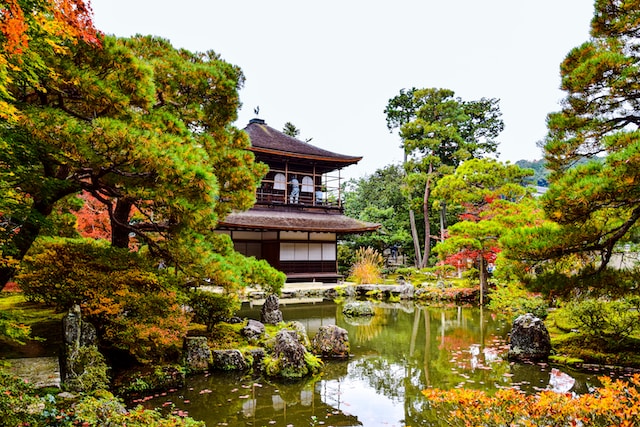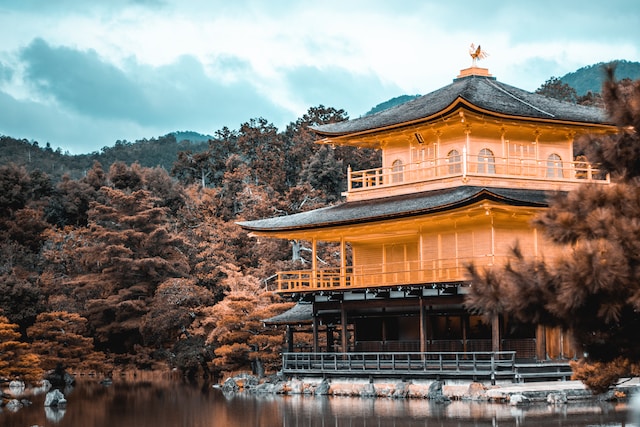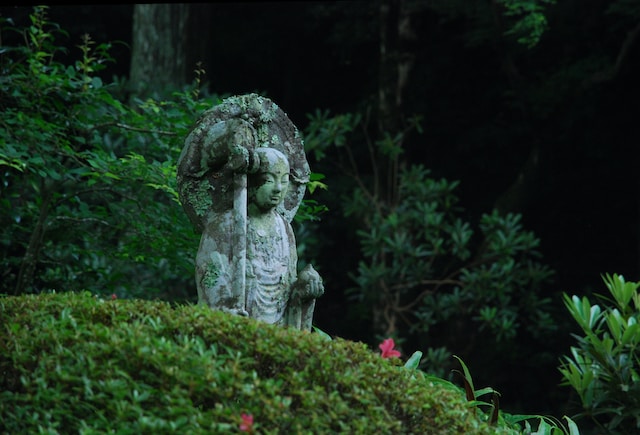
As dawn breaks over the ancient city, the first rays of sunlight gently touch the rooftops, illuminating the beauty of Kyoto’s temples, Japan. This city, steeped in history and culture, blossoms under the sun’s soft caress, revealing an eternal splendor that transcends time. Kyoto, where the past meets the present, is home to over 1,600 temples, each telling a story of heritage, resilience, and tradition. Whether participating in a lively summer festival dance or quietly reflecting in a secluded temple garden, you’ll find the city’s allure captivating. This article is an invitation to journey with us as we delve deeper into the heart of Kyoto, unearthing the enduring beauty of its remarkable temples.
The Allure of Kyoto: More Than a City
Nestled between mountains on the island of Honshu, Kyoto embodies a perfect harmony between the splendor of the past and the vibrancy of the present. Its allure lies in its temples and unique cityscape, teeming with a blend of old and new.
Heritage Amidst Urban Life
Heritage buildings stand side-by-side with contemporary structures, whispering stories of epochs gone by. Meandering through the city, you can stumble upon centuries-old shops selling traditional crafts, only to turn a corner and find yourself amidst a bustling high-tech district. This juxtaposition of the old and new may draw you to make Japan your new home, just like many other young couples have chosen to do.
Landscapes That Enchant and Inspire
Kyoto’s physical appeal extends beyond its buildings to its breathtaking landscapes. The city is dressed in stunning hues throughout the year, from the cherry blossoms in spring to the vibrant red maples in autumn. The scenic riverbanks and lush mountains provide a tranquil backdrop to this bustling city, adding to its irresistible charm.
As we delve deeper into the heart of this city, one aspect of its rich heritage stands out – its temples. Their spiritual significance and architectural grandeur symbolize this ancient capital’s enduring beauty and culture. Prepare to immerse yourself in the serenity and majesty of these sacred structures.

Unearthing the Beauty of Kyoto’s Temples, Japan
Temples serve as spiritual havens, places of worship, and key symbols of Japan’s cultural heritage. They are more than just buildings; they embody centuries-old traditions, encapsulating the country’s spiritual, artistic, and historical tapestry. Each one carries a distinct narrative, a unique essence that attracts not only the faithful but also lovers of art, history, and architecture.
Experiencing the Magnificent Temples
Consider starting your day early with a traditional Japanese breakfast, preparing your senses for the enriching experiences ahead. Among the standouts is Kinkaku-ji, the Golden Pavilion, an awe-inspiring edifice covered in gold leaf that shimmers amid a tranquil pond. Not too far away, you’ll find Ginkaku-ji, the Silver Pavilion, with its understated elegance and stunning sand garden.
Ryoan-ji is home to Japan’s most famous rock garden, inviting meditation and contemplation. Meanwhile, Kiyomizu-dera, perched on a hillside, offers spectacular city views, especially during cherry blossom and autumn leaf seasons.
These temples and many others provide a spiritual experience that imparts peace and transcendence. From the meticulously maintained gardens to the sublime architecture, these sacred spaces encapsulate the eternal beauty of Kyoto’s temples, Japan offering a fascinating exploration of splendor and spirituality.

A Journey Off the Beaten Path
While renowned temples often attract the spotlight, there’s a wealth of lesser-known sanctuaries in this city that offer unique charms and tranquility away from the crowds. Each teeming with its enchanting allure, these hidden gems provide intimate encounters with the city’s spiritual heritage. Diving into these often overlooked corners can reveal a side of the city’s religious culture that few see, enriching your experience.
Unveiling the Underrated Beauties
Let’s embark on this journey with Daigo-ji in the city’s southeast. This sprawling temple complex narrates tales of ancient Japan and boasts stunning gardens, particularly bewitching during cherry blossom season. As you wander around, you can’t help but be touched by the tranquility and the spiritual aura that hangs over this majestic place.
Head north, and you’ll find the temple of Enko-ji. Nestled amidst lush greenery, it is famous for its captivating display of autumn colors. A unique stone garden awaits, inviting visitors to meditate in its serene environment. When you climb up the hilltop location, you’re rewarded with magnificent views over the city, a vista that changes with every season.
Don’t miss Jisso-in, tucked away in a quiet residential area, far from the city’s bustle. This temple might seem unassuming at first glance, but step inside, and an unexpected visual treat greets you. Its polished wooden floor reflects the temple’s mossy garden, creating a perfect “painting” of the season. It’s a sight to behold, especially when the leaves change colors.
Last but not least, discover the charm of Sanzen-in, a temple in the rural area of Ohara. It is known for its moss garden and the iconic Yusei-en Garden, which takes on an ethereal beauty when shrouded in autumn colors or blanketed in snow.
In their unique ways, each of these temples adds to the overall narrative of the city’s spiritual heritage. They may not be as famous as their counterparts, but they offer distinct, memorable experiences that reward the adventurous. These less traveled paths often leave the most profound impressions, making them worth additions to any itinerary.

When to Visit and What to Wear
Timing your visit can greatly enhance your temple experience. Spring, with cherry blossoms in full bloom, and autumn, when leaves turn vibrant hues, are especially enchanting. However, quieter periods like early summer and late winter offer unique charm and tranquility.
During holiday seasons, such as Christmas and New Year, some temples hold special events and night-time illuminations, offering unique opportunities to see them in a different light. However, these periods can also be crowded, so plan accordingly.
In terms of dress code, most temples don’t have strict rules, but modest attire is generally appreciated. Comfortable walking shoes are a must, as many temples have expansive grounds with various terrain.
Temple Etiquette and Suggested Itineraries
Temples are places of worship, so it’s crucial to be respectful. Maintain quiet, don’t litter, and follow any specific guidelines provided. Some temples allow photography, but others may prohibit it, especially inside the buildings.
When planning your itinerary, consider grouping temples in proximity to each other. For instance, in northern Kyoto, you can visit Kinkaku-ji, Ryoan-ji, and Ninna-ji in one day. The city’s eastern part is home to Ginkaku-ji, Nanzen-ji, and Kiyomizu-dera, all reachable in a day’s tour.
These practical tips should help ensure a smooth, enriching experience as you explore the city’s temples’ enduring beauty and cultural significance.
In Conclusion
The beauty of Kyoto’s temples, Japan is more than skin deep. Each temple is a living testament to the city’s rich past and reflects its vibrant present. From the renowned edifices to the hidden gems, these spiritual sanctuaries capture the eternal splendor that makes this city unique. Whether you’re a history enthusiast, a cultural explorer, or simply a seeker of beauty and tranquility, these temples offer an unforgettable journey into the heart of Kyoto’s heritage. So why wait? Embark on your journey to uncover these timeless treasures and experience the enduring allure of Kyoto’s temples.
About the author:
Summer Morrison is a seasoned travel writer and cultural enthusiast who has called Japan her home for the past decade. Her in-depth knowledge and love for Japanese culture shine through her writing. Currently, she lends her expertise to Kokusai Express Moving Japan, aiding others in the smooth transition to life in Japan.

